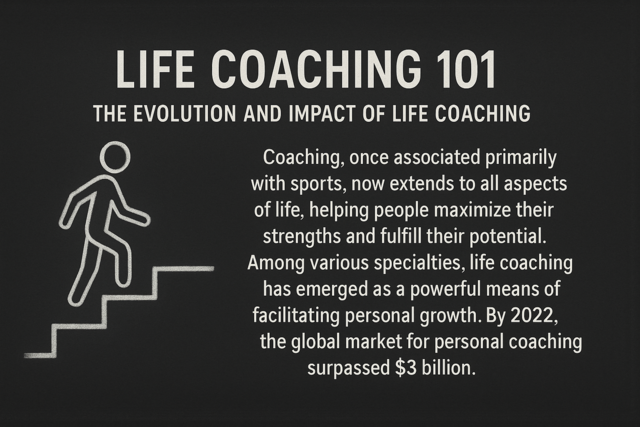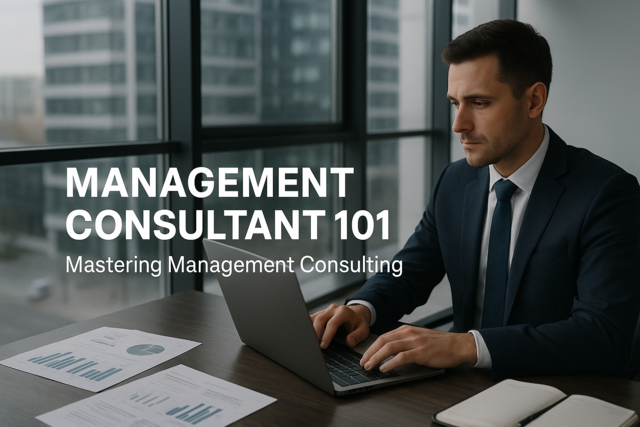A) Defining the Problem
It is essential to thoroughly define a problem before trying to solve it. Because it is such an important topic, this article presents three proven approaches to problem definition.
One theory perceives problems as negative situations where the obvious solution is to eliminate the problem. This perspective can be summed up as, "I just want the problem to go away."
Robert Harris, author of the book Creative Problem Solving: A Step-By-Step Approach (2002), calls this the "stop it" approach.
For example, I have gained weight. I see my overweight as a problem with negative side effects, including health problems, social problems, and emotional and psychological problems. I, therefore, need to stop eating excess sugar, carbohydrates, saturated fats, gluten, etc. Stopping certain eating behaviors is a direct way to solve the problem at hand.
Another example comes from the mortgage/foreclosure crisis. A number of lenders processed no-document loans where the applicants did not have to provide proof of income. The crisis included a variety of complex problems that are still not fully solved. One thing that became quite clear, however, was that the lenders simply had to stop making no-document loans.
One of the best examples of this perspective on a problem involves smoking and the illnesses it causes. Addressing the harmful health effects of smoking has generated a great variety of solutions over the years, including warning labels on cigarette packs; anti-smoking and how-to-quit media campaigns; no smoking laws applied to airplanes, restaurants and bars, public buildings, etc.; lawsuits by individuals and by state governments; increased taxes on cigarette sales; and a whole new product: Nicorette gum. Every one of these represents a stop it type solution. The problem is the harmful effects of smoking. The solution is to stop smoking through whatever means works.
A corollary to this definition perceives problems in terms of negative outcomes or side effects. Professor Harris put such occurrences into the "mop it" category. What is needed is a solution that cleans up the mess. Problem situations that are defined as needing to be "fixed" often fall into the mop it classification.
For example, the Fukushima Daiichi Nuclear Plant, damaged by the tsunami in Japan, leaked radiation and contaminated water, thereby poisoning the surrounding land so that it could not be farmed. Curtailing the leaks was a "stop it" problem.
Cleaning up the irradiated land and water clearly required a "mop it" solution. It is, in fact, one of the greatest mop-up projects in history. According to an NPR story (February 15, 2014) "One thing that seems certain is that the work of cleaning up and shutting down the Fukushima Daiichi nuclear plant will go on for a long time. TEPCO (Tokyo Electric Power Company) predicts it could last 30 or 40 years. Others say that estimate is blindly optimistic."
An alternative way to define a problem is to look at situations where current reality does not match an ideal (or goal).
For example, the quarterly sales results for our company did not reach the level we planned on. The problem is lower sales and revenue and lower profits (current reality) compared to projected results (ideal). Often this type of problem arises out of the difficulty of predicting the future. The ideal, or goal, is in the uncertain future; for example, what will the share price be for our company after it goes public in an IPO six months from now? Management has, no doubt, an ideal figure in mind -- and in their strategic plan. But on the day of the IPO (or several days later), the share price (current reality) will very likely differ from the goal (ideal).
In the article of problem solving, problem solvers may focus on either end of this equation, the current reality or the ideal or goal. For example:
-
Current Reality -- Our sales for the quarter were $X million, and we need to increase that to $Y million next quarter.
-
Ideal -- Our sales projections were wrong. They were too high for the state of the economy. Therefore, the company needs to change its approach to creating projections, giving more weight to the impact of macroeconomic factors.
A prime example of the ideal driving strategic planning and investment occurred in the telecommunications industry. At one point, service providers faced a significant technological problem. Signals traveling over metal wires were inadequate for the demand for telecommunication services.
So, a solution was developed: Fiber optic cables could handle multiple signals simultaneously. The problem seemed solved, and businesses invested heavily in installing a grid of fiber optic cables across the country and abroad. The ideal became having every phone and computer customer connected to your company's fiber optic cables and paying for the service. It seemed easy to predict that the investment in the fiber optic network would yield large profits for many, many years.
But technology changed the market. Cell phones and wireless networks revolutionized everything in the telecommunications industry. Investments in fiber optic networks wound up yielding losses instead of profits.
This narrative, however, has a happy ending for the telecommunications industry as a whole. The new ideal situation became having every phone and Internet customer connected to your company's wireless network. This opened up international markets where laying fiber optics was impossible or too expensive. Today, obviously, there are literally billions of new paying customers who might never have connected to a fiber optic system.
These two methods of defining a problem are useful and practical. Is the problem essentially a stop it or mop it situation? Or, is the nature of the problem best defined as an unsatisfactory current reality, versus an ideal? Answering such questions is often step one in the problem-solving process.
Lastly, but certainly not least, there is an entirely different way to look at a problem: Problems need not be seen as representing situations that must be stopped or fixed. Problems may instead present opportunities. In particular, looking at problems this way focuses attention on things that need to be changed. Opportunity-based problem solving can help generate the motivation and resources needed to make things better.The resulting solutions are often widely beneficial.
After World War II, thousands of soldiers returned from military service after years abroad. A problem arose: The nation's economy did not have enough available jobs to put all of these unemployed soldiers back to work. This problem turned out to be one of the biggest opportunities in the nation's history.
There was no way to create sufficient jobs in a short time. What to do? Pension off all of the returning veterans? This was clearly a thoroughly impractical solution.
A better solution presented itself: Keep the unemployed soldiers out of the workforce until the economy had time to transition from war time to peace time. Send them to school. Thus was born the G.I. Bill, which provided government-funded college educations for veterans.
The net result was a generation of educated young men with new skills and training in a wide variety of fields. This led, in part, to one of the strongest economic growth periods in American history. It also contributed to tremendous progress in science and technology, including, for example, the invention of super glue, the video tape recorder, the bar code, radial tires, the musical synthesizer, the black box flight recorder, the transistor radio, oral contraceptives (the pill), the nonstick Teflon pan, the solar cell, tetracycline, optic fiber, the computer hard disk, the hovercraft, liquid paper, Fortran computer language, the computer modem, the laser, the integrated circuit, the heart pacemaker, and the microchip. All of these inventions occurred from 1950 to 1960, in the time period immediately after the large contingent of veterans graduated from college.
Summarizing: Three useful models for defining a problem at the outset are: 1) stop it or mop it, 2) current reality versus ideal/goal, or 3) opportunity for change.
B) Putting the Problem into Its Context
After defining the problem, it is necessary to place the problem in context.What is the locus of the problem? Is it fundamentally a personal, group, or organizational (including business, corporate, educational, government, religious, and non-profit) problem?
Along with placing the problem in a structural context is the issue of the essential nature of the problem. Is it best viewed as personal, social, economic, political, environmental, spiritual, or some other kind of problem?
The recent mortgage foreclosure crisis is a good example of where these two notions of context interacted. For a couple about to lose their home, their problem was clearly a complex of personal, business, corporate, and governmental factors combined with personal, social, economic, and political implications. Such a complicated problem is challenging to solve, which is one reason that the problems of the mortgage crisis are still ongoing, years after the crisis began.
Developing a solution to such a complex problem would require considering the problem as multiple kinds of problems, each with a different context. At the personal level, the owners would need to consider their jobs, savings, assets, credit rating, and so on. According to one of our models, what is the borrowers' current reality, versus the ideal?
The homeowners would also need to consider the situation with regard to their lender. Was their lender, for example, involved in a merger or acquisition and how did that affect the lender's policies and willingness to extend credit? What is the lender's current reality, versus the ideal?
C) Who Is Involved in the Problem: Stakeholders
Finally, in defining the problem, there is the issue of stakeholders. Who is involved? Who is affected by the problem? Who may be blocking a solution? Who controls the resources necessary for solving the problem? Identifying the stakeholders is essential to defining any problem before trying to solve it. Among those connected to the problem, whose input is useful and/or important? Who will be involved in the problem-solving process? Who will be making the decisions necessary to solving the problem? Who may be blocking a solution and what is their motivation for doing so?
This is, obviously, where the problem-solving process morphs from individual analysis and ideas to group dynamics, corporate culture, political alliances, etc. This leads to more complications, but also to more opportunities for changes that need to happen.
The Mothers Against Drunk Driving (MADD) campaign is a great example. The many injuries to, and deaths of, children and teens from accidents caused by drunk drivers had become a serious problem. But little or nothing was being done to attempt to solve it.
The original stakeholders included the mothers and family members of injured children, the drivers and their families, emergency safety and medical personnel, bar and restaurant owners, liquor manufacturers and distributors, the police, the courts, lawyers, and local governments.
At first, the drunk driving problem seems like a straightforward example of a stop it problem. Stop drivers from drinking or stop drunks from driving. But how? Who would do the stopping and through what means? Many, if not most, of the stakeholders were committed to the status quo.
Various direct solutions presented themselves. Technical: Develop automobile systems that detect drunken behavior, such as swerving, and stop the car. Legal: Increase fines for bar and restaurant owners and managers when one of their customers is involved in a drunk driving accident or arrest. Law Enforcement: Increase police presence in neighborhoods with a concentration of bars, and double patrols at closing times. Public Policy: Mandate stricter curfews so fewer teens are on the roads at night when most drunk driving accidents occur. Change speed limits and install speed bumps in residential neighborhoods and around schools to protect children.
All of these potential solutions would face resistance and powerful push back from those affected: auto manufacturers, business owners, police forces, or local governments. Such solutions would both require change and cost money. No wonder the problem had not been addressed appropriately. It seemed unsolvable.
Yet, the women who founded and organized Mothers Against Drunk Driving (MADD) still perceived the drunk driving problem as an opportunity. They had the vision to realize that a major change in public opinion could trump resistance and entrenched interests. They needed to expand the stakeholders to include the public at large.
So, they started with media coverage and education as means to change public attitudes. Then, with the public behind them, they proceeded to apply political pressure on legislators, and, ultimately, to affect a change in the legal system. In the end, the courts and the police, as agents of law enforcement, had to be the stoppers, but getting the public and lawmakers on board first was essential.
MADD worked for, and achieved, increased media attention to the problem. This led, in part, to increased funding for awareness and education programs. Public opinion shifted: People began to see drunk driving as a serious problem requiring action. The general public became stakeholders in the solution to the problem. Who didn't want to keep everyone on the highways safer?
With the public involved, public officials took notice. They became stakeholders in finding a solution. Legislators in many states responded with new and tougher laws that mandated stiffer fines, license revocations, and jail time for drunk driving offenses.
The women in MADD understood that redefining the stakeholders was the way to make solving a seemingly insurmountable problem solvable. The net result has been safer roads for everyone.





























